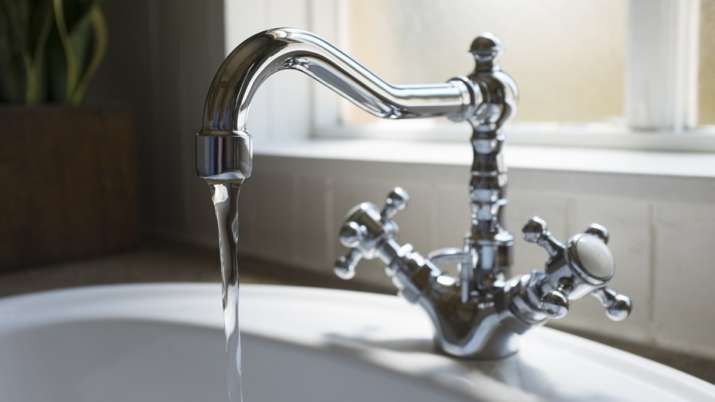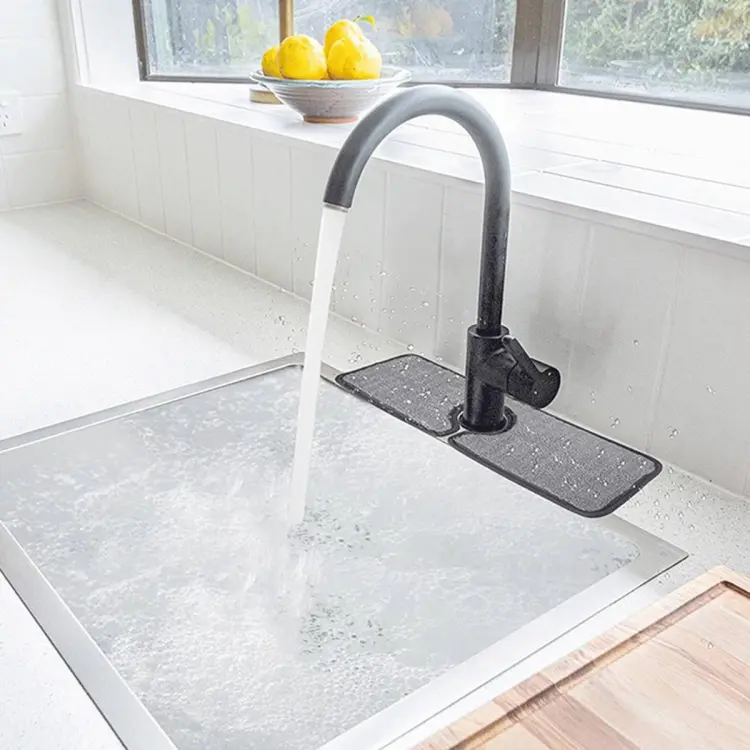Uncovering the Importance of a Damaged Faucet
Uncovering the Importance of a Damaged Faucet
Blog Article
What're your beliefs about How to Fix a Leaky Faucet?

Intro
A leaky tap could look like a small inconvenience, but its effects extend far past the periodic drip. Understanding the impacts of a dripping tap is essential for both house owners and the environment. In this short article, we'll explore the various effects of this typical family issue and why addressing it quickly is necessary.
Causes of Leaky Faucets
Leaking taps can arise from a range of aspects, consisting of wear and tear, high water stress, and corrosion. In time, the continuous use faucets can cause damaged seals and gaskets, creating leakages to create. Furthermore, extreme water pressure can put stress on plumbing components, resulting in leaks. Rust and rust can likewise damage tap components, making them vulnerable to leakage.
Water Waste
One of one of the most considerable repercussions of a leaky faucet is water waste. Also a tiny drip can amount to gallons of wasted water with time. This not only drives up water costs but also adds to water scarcity and environmental destruction. Resolving dripping taps immediately is crucial for conserving this precious source and lessening its effect on the planet.
Financial Effect
In addition to wasting water, leaky taps can also have a significant financial impact. Increased water costs are a direct repercussion of water wastage, costing home owners numerous dollars every year. In addition, the cost of repairing water damage brought on by leaks can be substantial, particularly if left neglected for a prolonged duration.
Environmental Impact
The environmental influence of dripping faucets expands past water wastefulness. By saving water, property owners can add to more comprehensive efforts to reduce water scarcity and shield all-natural communities. Sustainable alternatives such as rain harvesting and water-efficient fixtures can even more reduce the environmental impact of family water use.
Technological Solutions
Improvements in technology have led to the growth of clever taps and water-saving devices that aid lessen water wastefulness. Smart taps use sensors to discover activity and readjust water circulation appropriately, reducing waste without compromising ease. Water-saving tools such as aerators and low-flow showerheads are also reliable in preserving water without compromising performance.
Worldwide Perspectives
While leaking taps may appear like a local issue, they add to wider international obstacles such as water deficiency and environment adjustment. In regions currently encountering water stress and anxiety, every decline counts, making leakage avoidance and repair service vital. By taking on water-saving methods and purchasing lasting technologies, homeowners can play their part in addressing these pushing worldwide problems.
Regulative Actions
Government guidelines play an important duty in minimizing the effect of leaky taps and promoting water preservation. From developing codes that require water-efficient fixtures to water-saving rewards and rebates, policymakers have a variety of devices at their disposal. By applying and imposing these guidelines, federal governments can guarantee that home owners focus on water preservation in their daily lives.
Area Effect
Attending to leaking taps calls for collective efforts at the area level. By raising recognition regarding the significance of water conservation and providing resources for leakage discovery and repair service, regional authorities can equip home owners to do something about it. Campaigns such as water-saving discount programs and leakage discovery campaigns can incentivize habits adjustment and advertise liable water use.
Instance Researches
Real-life examples of the impact of leaking taps emphasize the significance of positive maintenance and prompt repair services. From water damage to increasing water bills, the repercussions of neglecting leakages can be serious. By sharing these study, property owners can much better recognize the importance of resolving leaky taps immediately.
Educational Campaigns
Educational campaigns play an important role in elevating understanding regarding the impacts of leaky taps and advertising water conservation techniques. Via workshops, seminars, and on the internet sources, home owners can learn exactly how to spot and repair leaks themselves. By encouraging individuals with knowledge and tools, instructional campaigns can foster a culture of accountable water use within neighborhoods.
Health Concerns
Leaking faucets can develop helpful atmospheres for mold and mildew development, positioning health and wellness threats to owners. The presence of mold can worsen respiratory system problems and allergic reactions, specifically in at risk individuals. Additionally, water damages resulting from leakages can jeopardize the architectural honesty of structures and lead to expensive repair work.
DIY vs. Expert Fixing
When confronted with a leaking faucet, home owners typically dispute whether to attempt fixings themselves or employ a professional plumber. While DIY fixings can conserve money, they might not always deal with the hidden issue successfully. Professional plumbing technicians have the knowledge and devices to identify and take care of leakages correctly, making sure long-term solutions and peace of mind for house owners.
Safety nets
Preventing leaking taps needs regular maintenance and proactive steps. Easy tasks such as replacing damaged washers and seals can protect against leakages from developing. Additionally, updating to high-grade fixtures and minimizing water stress can help extend the life expectancy of taps and minimize the threat of leaks.
Final thought
To conclude, the impacts of a leaking faucet expand much past the periodic drip. From water wastefulness and enhanced water costs to health and wellness concerns and ecological influence, the repercussions of neglecting leaks can be considerable. By dealing with leaking faucets without delay and adopting water-saving practices, house owners can reduce these results and contribute to an extra lasting future.
Why You Shouldn’t Ignore a Leaky Faucet in Your Home
What Causes a Leaky Faucet?
Various factors can cause a leak, from loose and worn-out parts to corrosion. Your faucet has four essential components from which most plumbing issues will stem: the O-ring, the valve seat, the washer and the gasket.
What Is an O-Ring?
The O-ring is a stem screw that fastens parts of the faucet in place, preventing water from leaking out of the spout. Depending on your faucet type, the stem might have multiple O-rings. Water will drip from the faucet’s handles and base if this part breaks or deteriorates.
What Is a Valve Seat?
The valve seat controls the flow and temperature of the water. Found at the base of the handle, it works as a seal for the faucet’s stem. The valve seat ensures the water is allowed to flow or is blocked as the handles dictate. You’ll know it’s malfunctioning when water leaks from your faucet’s sides.
What Is a Gasket?
The gasket is found between the water inlet and the valve stem. It creates a seal between the faucet and the sink, holding its joints by aerators attached to the stem’s head. Water will trickle out from the base if the gasket isn’t working.
What Is a Washer?
The washer secures the handles and prevents leakage, serving a similar purpose to the O-ring. While the O-ring is ordinarily round and made from an elastic material, such as rubber, the washer is square-shaped and composed of brass, copper and other hard metals. If it malfunctions, corrodes or has been improperly installed, water will leak out of the handles, causing that incessant faucet drip.
Why Is a Leaky Faucet Dangerous?
A leaky faucet left alone for too long can have significant consequences.
Pest Infestations
Since bugs and rodents gravitate towards the scent of water, a leaky faucet will draw pests to your sink. Both are looking for leaks accessible through crawl spaces, which a faucet provides. If you leave water dripping for too long, you run the risk of an infestation.
Rust
If one of the faucet parts has started to corrode, the resulting rust can spread to your pipes and valves with startling speed. The rust might even lead to cracks or other impairments, resulting in more severe plumbing issues.
Your sink could also sustain damage from a leaky faucet. The water in your tap possesses sparse elements of calcium and iron that can stain your sink with repeated and prolonged exposure. Once those elements in the water have been open to the air for some time, your sink will start to rust, creating marks that can be difficult to remove.
https://www.tomsmechanical.com/blog/why-you-shouldnt-ignore-a-leaky-faucet-in-your-home

As a fervent person who reads on How to Fix a Leaky Faucet, I thought sharing that information was really useful. Liked our blog? Please share it. Let other people discover it. Bless you for being here. Please check up our site back soon.
Report this page